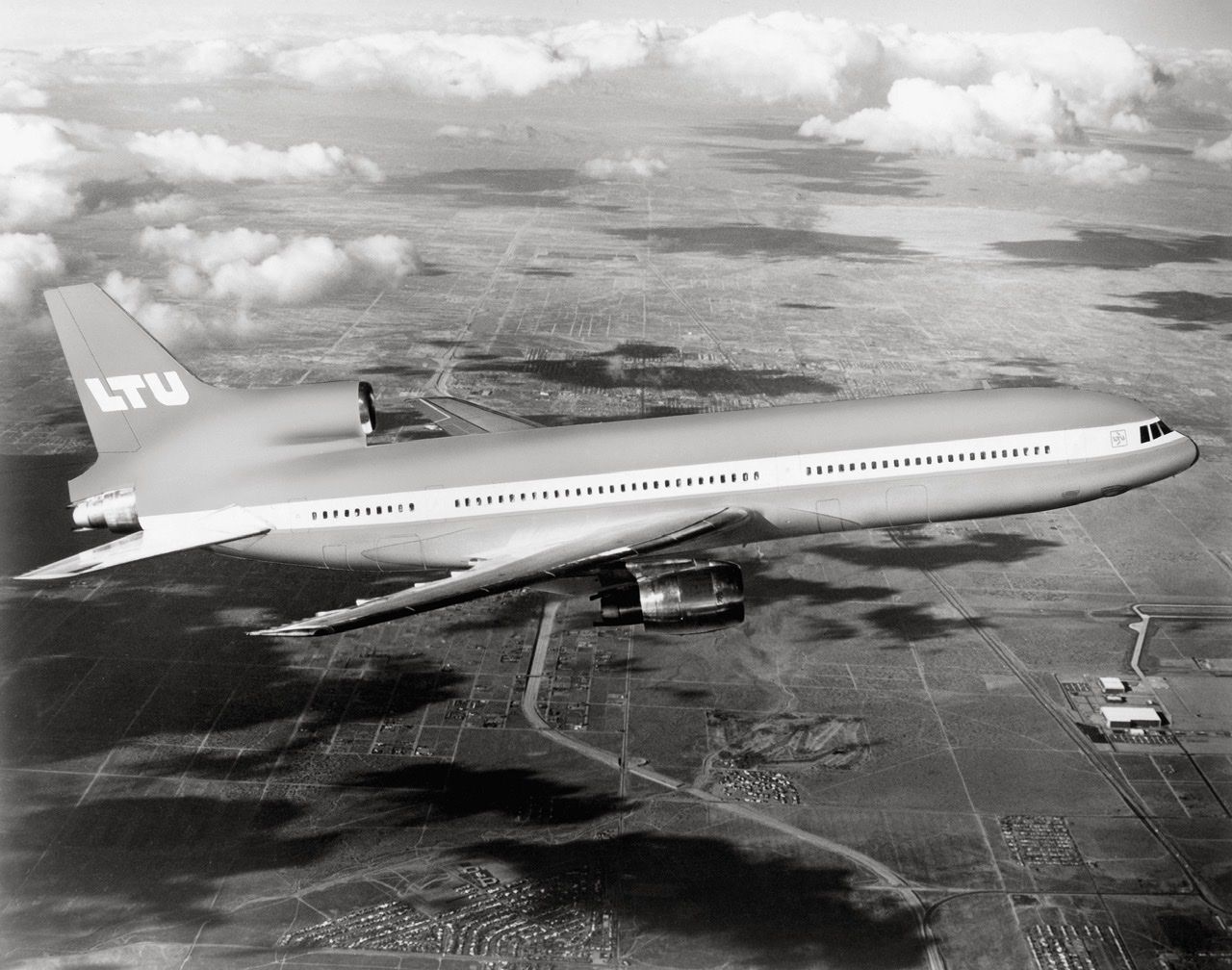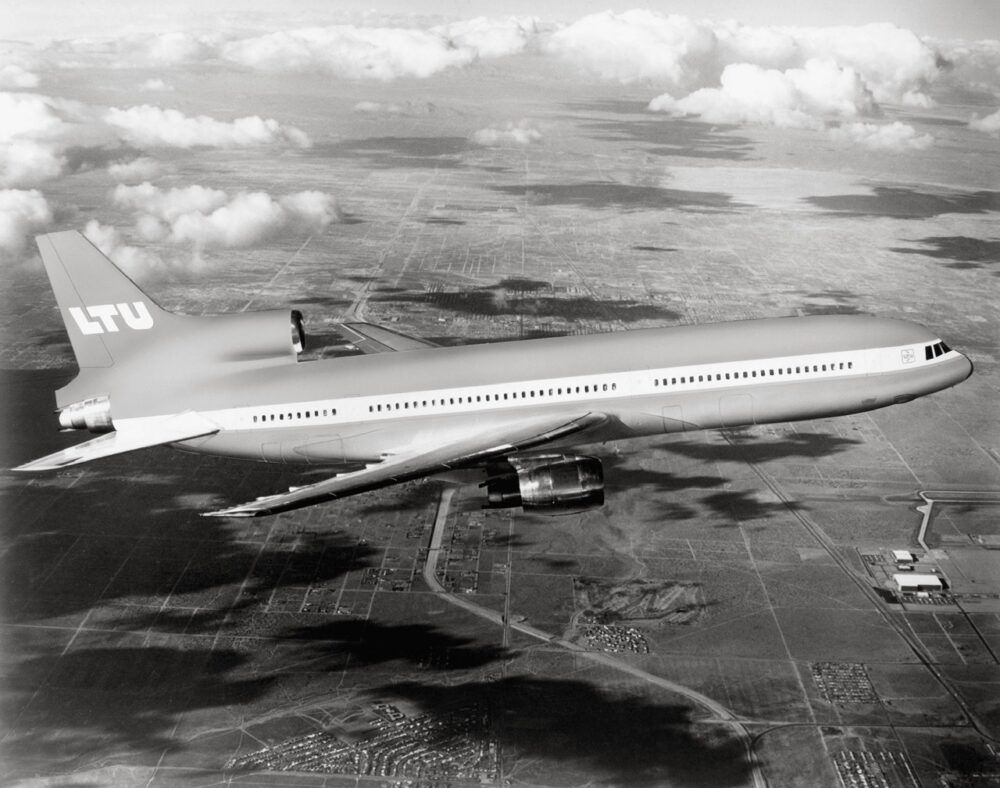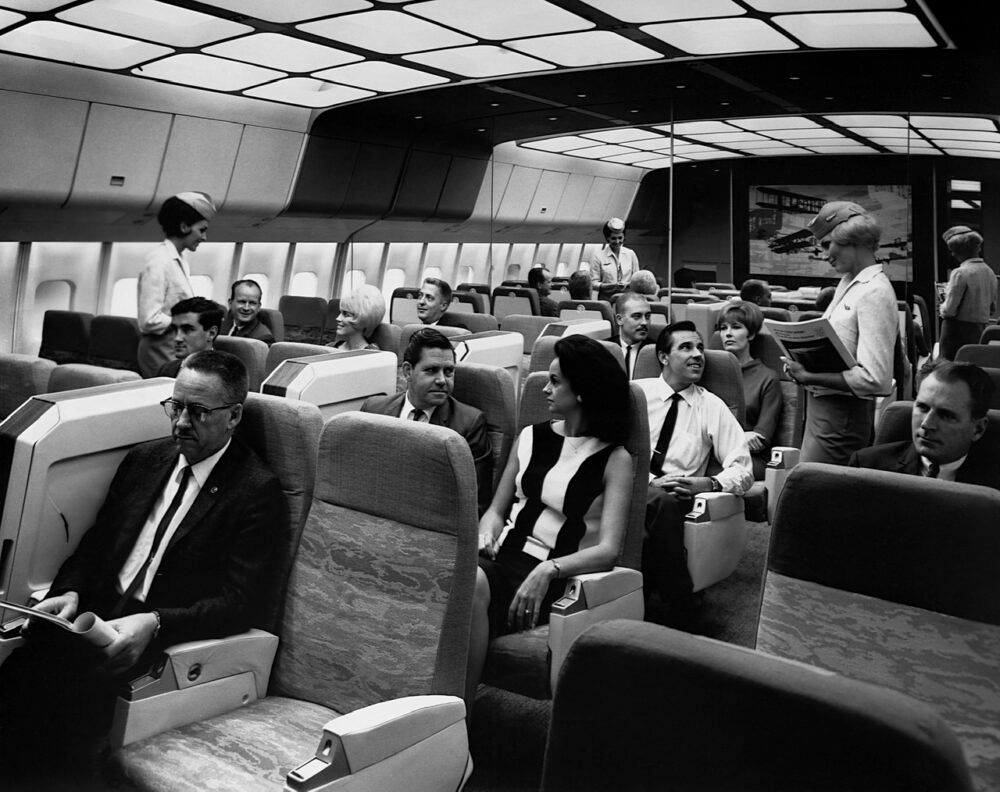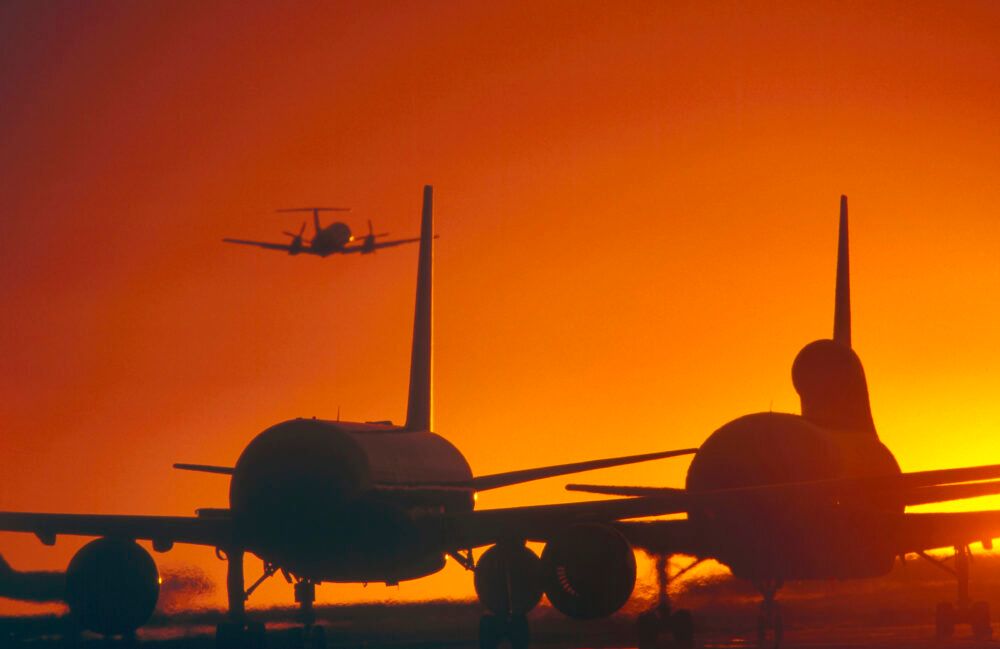It's been nearly five decades since the Lockheed L-1011 TriStar entered service. Operators such as TWA praised the aircraft as one of the safest in the world, while powerhouses such as Delta Air Lines were also massive fans. Those flying on the plane following its introduction in the 1970s would have noticed that there was a curved row of lavatories at the back of the widebody trijet.
Cabin creativity
The Lockheed L-1011 came with numerous cabin innovations. For example, it had full-sized hideaway closets for jackets, glare-resistant windows, and even a below-deck galley. Inflight meals made their way up to the main cabin via a pair of elevators.
Customers loved flying on the plane due to its unique features, such as extra-wide aisles and overhead bins. They would have also appreciated the distinct engine configuration that reduced sound in the passenger cabin.
Eastern, which debuted the plane, dubbed it the Whisperliner due to its quiet takeoffs. While the main cabin may have been all peace and quiet, the same can't necessarily be said about the rear.
At the back
The aircraft had lavatories at the back wrapped around the plane’s rear bulkhead. Airline Secrets Exposed highlights that the WCs were found right under the intake to the aircraft’s number two engine. The noise was significantly loud and the sucking sound was notably disrupting.
Airlines placing their lavatories in this configuration would allow them to fit more up to five units at the back of the aircraft. Some of the L-1011's predecessors and counterparts such as the DC-8 had similar settings. Many widebodies feature only up to four washrooms at the rear. The galleys on the L-1011 were underfloor. Therefore, the space may not have been needed on the main deck for this area.
[iframe src="https://www.facebook.com/plugins/post.php?href=https%3A%2F%2Fwww.facebook.com%2FAIRLINESECRETS%2Fposts%2F3152408435032153&show_text=true&width=500" width="500" height="702" style="border:none;overflow:hidden" scrolling="no" frameborder="0" allowfullscreen="true" allow="autoplay; clipboard-write; encrypted-media; picture-in-picture; web-share"></iframe]
This formation was commented on even back when it was in service. Rubenerd notes that this semicircular arrangement was dubbed Cannery Row by Lockheed workers.
Stay informed: Sign up for our daily and weekly aviation news digests.
Different setups
Altogether, we've become largely accustomed to the standard toilet configurations on passenger jet aircraft built by the likes of Airbus and Boeing. However, even these productions can have unique lavatory locations.
For instance, Lufthansa's A340-600 has downstairs toilets. Passengers wanting to head to the washroom can take a trip down a flight of steps to the plane's cargo hold.
One thing that correlates between the toilets pictured in Airline Secrets Exposed's Facebook post and those found on modern aircraft is the lack of space. It's always a tight squeeze when popping to the loo onboard. However, this aspect may soon change as the likes of AirGo are drawing up concepts to offer more space in the bathroom and make it more accessible for wheelchair users without reducing passenger capacity on the plane.
What are your thoughts about the Lockheed L-1011 TriStar and its features? Did you fly on the plane when it was in commercial service, if so, did you notice this lavatory configuration? Let us know what you think of the aircraft and its innovations in the comment section.




